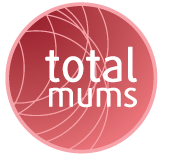Objective
The objective of this research was to identify the risk factors for musculoskeletal disorders present when mothers lift normally developing children weighing between 20 and 31 lbs (9–14 kg) in the home.
Method
Twenty five mothers aged 28–40 years completed Sanders and Morse’s (2005) self-report survey of pain and high-risk practices. In addition, the OMLITH, a structured checklist for observing mothers lifting children in the
home, was developed. Criteria to rate variables relating to the load (child), environment, person (mother) and task as low, moderate or high risk were developed, on the basis of published manual handling assessments. The mothers were observed performing 87 lifts, and risk factors were rated.
Results
The majority of participants reported low back pain (64%). They self-rated bending while carrying a child as most stressful, and various other tasks involving carrying; prolonged bending, squatting or stooping; and lifting a child as physically stressful. At least one risk factor related to the load was recorded in all 87 observations, with moderate to high risk most frequently related to the child’s weight (73.6%) or the mother’s grip on the child (93.1%). Common environmental factors presenting a moderate to high risk related to space constraints (59.7% of tasks) and equipment (58.6%). Factors related to the mothers’ strength and fitness (57.5% of tasks) commonly posed moderate to high risk, as did horizontal reach distances (82.8%), vertical lift distances (78.2%) and reaches above shoulder height or below mid thigh level (88.5%). Trunk rotation greater than 45° or combining rotation and side bending while lifting resulted in a moderate to high risk rating in 72.4% of tasks. The developmental age of the child interacted with weight to increase or decrease the requirement for lifting.
Conclusion
Risk factors for musculoskeletal disorders are present to a significant degree, and further research in this area is warranted. Copyright © 2012 John Wiley & Sons, Ltd.
